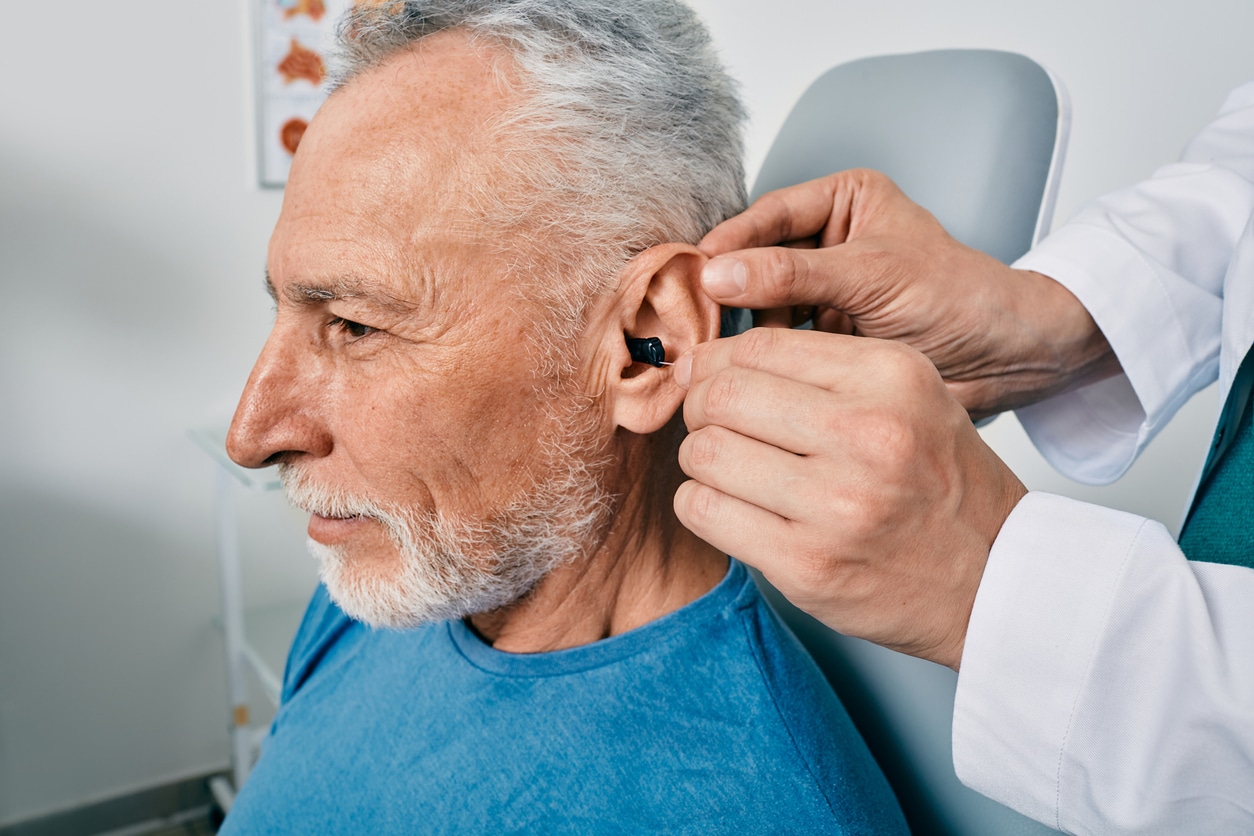Data from the MarkeTrak 2022 survey found that most hearing aid users report quality-of-life benefits from their hearing aids. Getting hearing aids is a significant first step to tackling your hearing loss treatment. After you receive your test results, choosing the right hearing aids and programming can be a little daunting. To help simplify the process, we have broken it down into five simple steps:
- Discussion of needs
- Style preference
- Selection
- Fitting
- Programming
Let’s examine each step a little more closely.
Discussion of Needs

Your hearing aid specialist will ask you questions about your lifestyle or the lifestyle you desire to have after getting your new devices. For instance, if you spend a lot of time at Salem Lake, they may recommend water-resistant options. If you attend many concerts or gatherings, they may recommend automatic programming so that you can adjust your settings to fit your changing environments.
Style Preference
Hearing aids come in two broader options including:
- In-the-ear (ITE). Often referred to as invisible hearing aids, this style is worn in the ear canal and is generally custom-made.
- Behind-the-ear (BTE). The more common option, these devices sit behind or on top of the outer ear and have tubing that brings sound into the ear canal. They can come in muted colors to match hair or skin to be less conspicuous or brighter to add a little extra flair.
Each option comes in various sizes and styles, some more discreet and others more obvious. Your hearing aid specialist will discuss your desired look and needs to help you determine which option is right.
Selection
After you discuss your lifestyle and style preferences, your hearing aid specialist will present you with a few options to choose from. Once you have selected the style and brand you want, your specialist will fit your new device.
Fitting
The hearing aid fitting process will differ based on your chosen style. Behind-the-ear devices do not tend to need custom fitting. Instead, your specialist will likely try different sizes based on your needs. In-the-ear styles, however, may require a custom fit. During this process, your specialist will take a mold of your ear and send the mold to the manufacturer to create your custom devices. The wait time may vary for each manufacturer or device style. Ask your audiologist how long they expect the wait to take.
Programming
Once your devices have arrived, your specialist will program them for your hearing needs. They may play various sounds for you to ensure the devices are working correctly. If you have chosen an automatic programming style, your specialist will show you how to program it after the initial appointment.
For more questions about hearing loss treatment, contact Willamette ENT & Facial Plastic Surgery today to make an appointment with one of our specialists.
“Had a great experience. Got in very quick and felt safe with covid protocol! Everyone was extremely nice.”